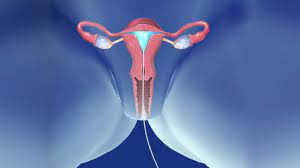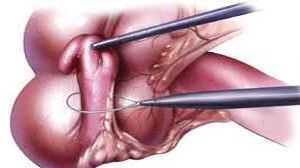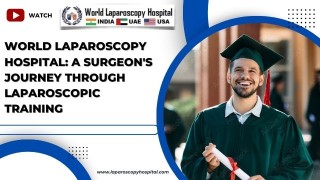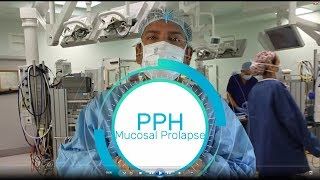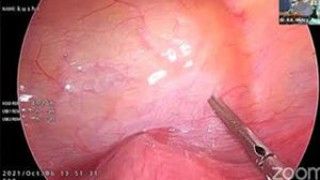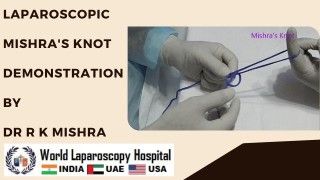Exploring Laparoscopic Cerclage Surgery: Dr. B. B. Dash’s Insights from the WALS 2025 Conference
Add to
Share
177 views
Report
1 month ago
Description
Laparoscopic Cerclage Surgery: Dr. B. B. Dash’s Insights from the WALS 2025 Conference Laparoscopic cerclage surgery has emerged as a revolutionary technique in the field of gynecology, offering a minimally invasive solution to address cervical insufficiency—a condition that can lead to recurrent pregnancy loss or preterm birth. At the World Association of Laparoscopic Surgeons (WALS) 2025 Conference, held on February 8-9, 2025, at The Leela Ambience Gurugram, India, Dr. Biswa Bhusan Dash, a renowned gynecological laparoscopic surgeon, shared his expertise and insights on this procedure. With over 19 years of experience and a reputation for performing thousands of complex gynecological surgeries, Dr. Dash’s contributions at the conference shed light on the advancements, benefits, and future potential of laparoscopic cerclage surgery. This article delves into his key takeaways from the WALS 2025 Conference, exploring the technique, its clinical significance, and his perspective on its role in modern gynecological practice. Understanding Laparoscopic Cerclage Surgery Cervical insufficiency is a condition where the cervix weakens and dilates prematurely during pregnancy, often leading to miscarriage or preterm delivery. Traditionally, cervical cerclage—a procedure involving the placement of a stitch around the cervix to reinforce it—has been performed via a transvaginal approach. However, in cases where vaginal cerclage fails or the cervix is too short or damaged, a transabdominal approach becomes necessary. Laparoscopic cerclage, a minimally invasive version of the transabdominal cerclage (TAC), has gained prominence due to its reduced morbidity and faster recovery times compared to open surgery. During laparoscopic cerclage, small incisions are made in the abdomen, through which a laparoscope and specialized instruments are inserted. The surgeon places a suture or tape around the cervix at the level of the internal os, providing structural support to sustain a pregnancy to term. This procedure is typically performed preconceptionally or in the first trimester for women with a history of cervical insufficiency or prior failed vaginal cerclages. Dr. Dash, who has pioneered numerous laparoscopic techniques in India, emphasized at the WALS 2025 Conference that this approach represents a significant leap forward in maternal-fetal medicine. He highlighted its precision, reduced blood loss, and lower risk of complications as key advantages over traditional methods. Dr. B. B. Dash: A Leader in Gynecological Laparoscopy Dr. Biswa Bhusan Dash, based at Rejoice Hospital in Delhi, is a trailblazer in the field of gynecological laparoscopy. With advanced training from the prestigious All India Institute of Medical Sciences (AIIMS), New Delhi, and international exposure in Canada, the USA, and the UK, Dr. Dash brings a wealth of knowledge to his practice. His expertise spans fertility-enhancing surgeries, laparoscopic hysterectomies, myomectomies, and complex cases involving endometriosis and large uterine fibroids. At the WALS 2025 Conference, he was recognized as a key speaker, sharing his vast experience with an international audience of surgeons, gynecologists, and researchers. Dr. Dash has performed thousands of laparoscopic procedures, earning accolades such as the "Most Promising Gynae Laparoscopic Surgeon of India" at the 5th Global Excellence Awards in 2017. His work at Rejoice Hospital, a facility he founded to provide ethical and affordable gynecological care, reflects his commitment to advancing women’s health through cutting-edge technology. His insights at WALS 2025 underscored his role as a thought leader in minimally invasive surgery, particularly in the application of laparoscopic cerclage. Key Insights from WALS 2025 The WALS 2025 Conference, themed "Recent Advances in Minimal Access Surgery," provided a platform for global experts to discuss innovations in laparoscopic, robotic, and endoscopic techniques. Dr. Dash’s presentation on laparoscopic cerclage surgery was a highlight, offering practical and evidence-based perspectives on its implementation and outcomes. Below are some of the key insights he shared: 1. Superior Outcomes Compared to Open TAC Dr. Dash referenced a growing body of research, including systematic reviews and meta-analyses, demonstrating that laparoscopic cerclage outperforms open transabdominal cerclage in several metrics. He noted a statistically significant reduction in fetal loss, blood loss, and postoperative hemorrhage with the laparoscopic approach. For instance, studies have shown average blood loss of approximately 24.5 mL with laparoscopic cerclage compared to 110.6 mL with open TAC. These findings, he argued, make a compelling case for adopting the minimally invasive technique in suitable patients. 2. Patient Selection and Timing A critical aspect of Dr. Dash’s talk was the importance of patient selection. He stressed that laparoscopic cerclage is most effective for women with a history of recurrent second-trimester losses, prior failed vaginal cerclages, or anatomical challenges such as a short or scarred cervix. He also recommended performing the procedure preconceptionally whenever possible, as it allows for better surgical access and reduces risks to the fetus. However, he acknowledged that first-trimester cerclage remains a viable option in urgent cases. 3. Technical Precision and Skill Laparoscopic cerclage requires a high level of surgical expertise due to the delicate nature of the procedure and the proximity to vital structures like the uterine arteries. Dr. Dash shared intraoperative footage from his own cases, demonstrating the meticulous placement of the suture at the cervico-isthmic junction. He emphasized the importance of training and mentorship, noting that he has personally trained over 100 gynecologists in laparoscopic techniques. At WALS 2025, he advocated for standardized training programs to ensure consistent outcomes worldwide. 4. Faster Recovery and Patient Benefits One of the standout advantages of laparoscopic cerclage, according to Dr. Dash, is the rapid recovery it offers. Patients typically return home the same day or within 24 hours and resume normal activities within a week—compared to four to six weeks with open TAC. This reduced downtime, coupled with minimal scarring and lower postoperative pain, enhances the patient experience and satisfaction. Dr. Dash illustrated this with testimonials from his patients, many of whom successfully carried pregnancies to term following the procedure. Conclusion: A Vision for the Future Dr. B. B. Dash’s insights from the WALS 2025 Conference position laparoscopic cerclage surgery as a cornerstone of modern gynecological care. His emphasis on evidence-based practice, technical mastery, and patient-centered outcomes resonated with attendees, sparking discussions on how to integrate this technique into routine practice. As a pioneer in the field, Dr. Dash not only showcased the current state of laparoscopic cerclage but also charted a path forward, envisioning a future where minimally invasive surgery continues to evolve with technological advancements. For women facing the heartbreak of cervical insufficiency, laparoscopic cerclage offers hope—a chance to carry a pregnancy to term with less risk and faster recovery. Dr. Dash’s work, as highlighted at WALS 2025, exemplifies the power of innovation in transforming lives, one surgery at a time. As the field progresses, his contributions will undoubtedly inspire the next generation of surgeons to push the boundaries of what’s possible in minimally invasive gynecology.
Similar Videos

